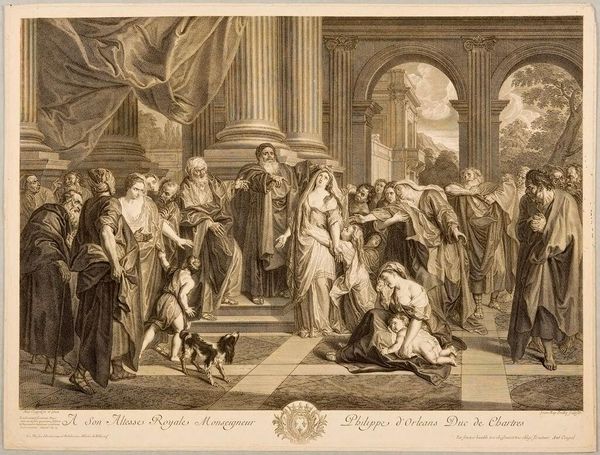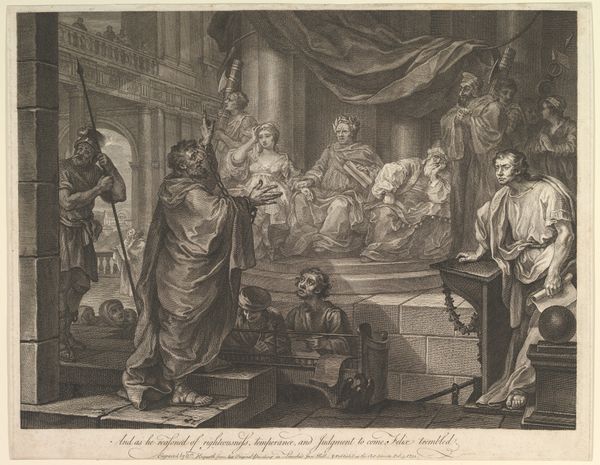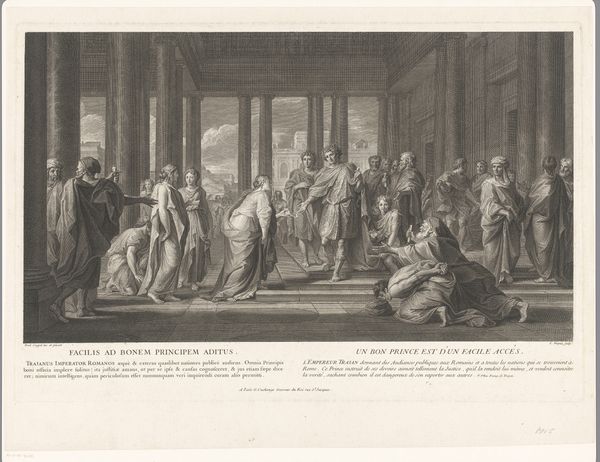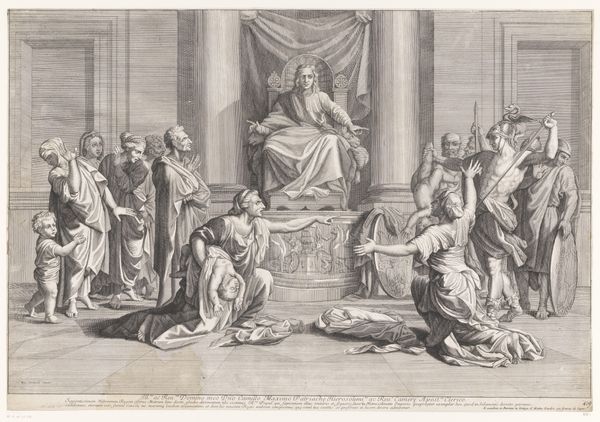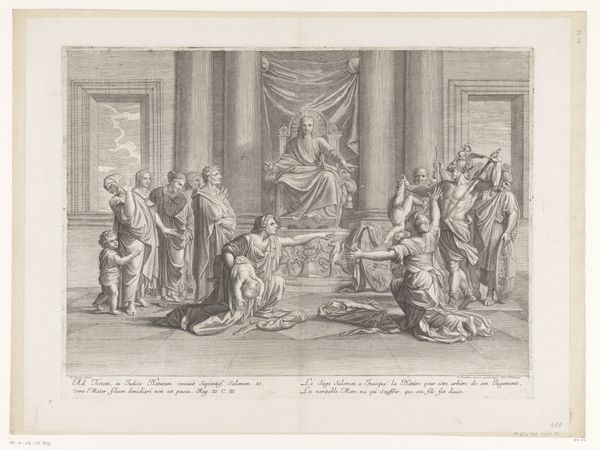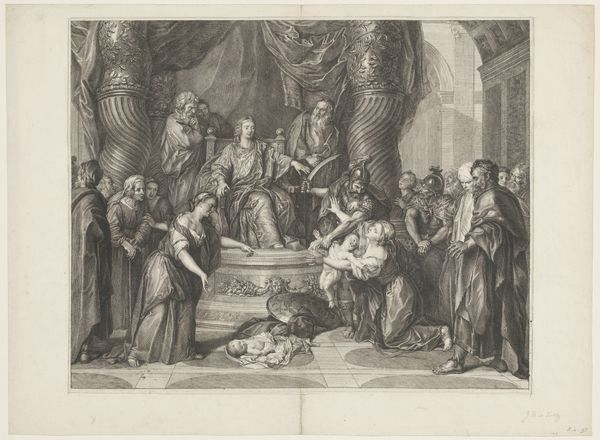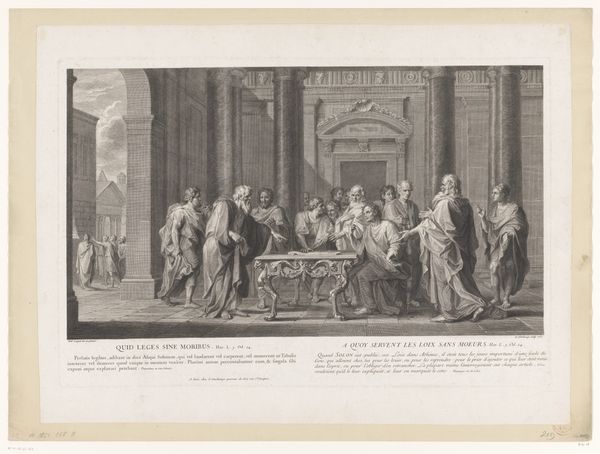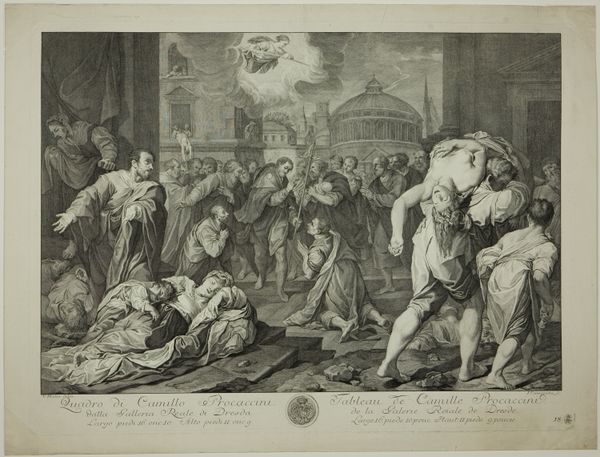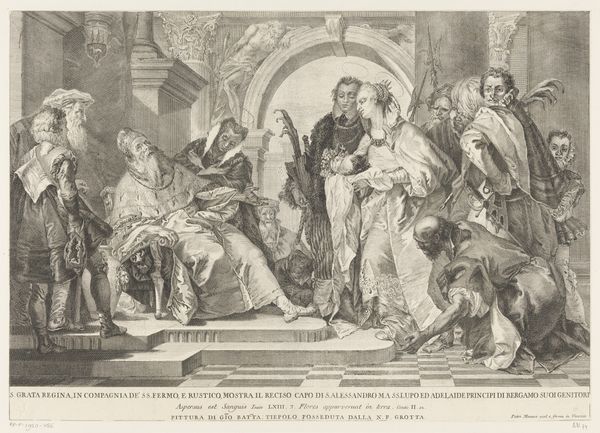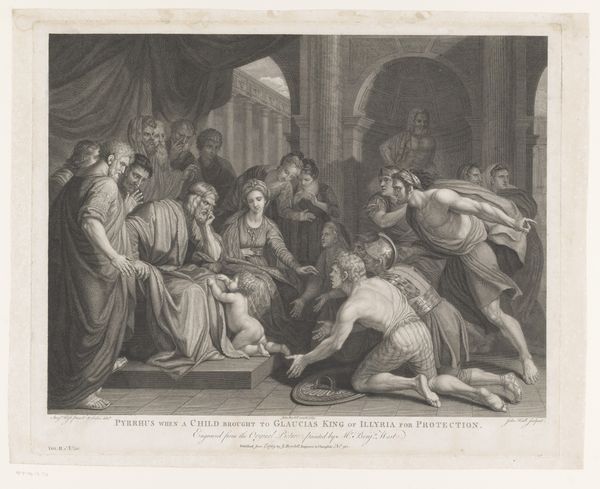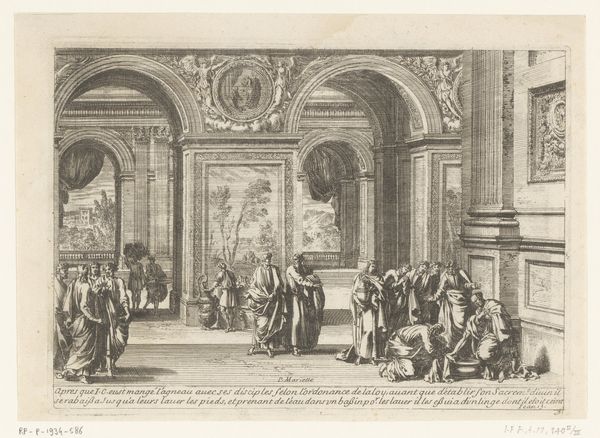
engraving
#
narrative-art
#
baroque
#
old engraving style
#
history-painting
#
engraving
Dimensions: height 539 mm, width 721 mm
Copyright: Rijks Museum: Open Domain
Curator: This engraving is entitled "Susanna accused by the Elders", made sometime between 1679 and 1722 by Jean-Baptiste de Poilly. The medium is engraving, common during that period. Editor: The visual dynamics are remarkable. Look at the staging, the way the characters are arranged creates immediate drama. There’s this sense of accusation and vulnerability, amplified by the crispness of the line work. Curator: The means of production speak volumes. This wasn't some spontaneous sketch. De Poilly’s expertise highlights engraving's crucial role in disseminating narratives. Prints democratized stories and ideas, placing them within reach of broader audiences beyond the elite. It's a commentary on visibility, class, and the consumption of biblical narratives in the everyday lives of the time. Editor: Yes, the visual balance achieved through lines and shading helps deliver the narrative in a sophisticated fashion, creating distinct groupings that pull our eyes through the scene and settle on Susanna at its center. The dramatic effect feels decidedly Baroque. Curator: That's what I find intriguing, how social narratives such as the vulnerability of women come into play within that context, influencing and being influenced by material conditions and accessible distribution networks. Editor: True, the engraving as object also provides us access to De Poilly’s mastery of composition and how the architecture forms more than a backdrop; its archways mirror the arches of the moral dilemma that frames the subject’s psychological distress and shapes her image. Curator: Right, the production context reminds us art doesn't exist in a vacuum. It’s woven into the fabric of commerce and influence. Understanding how prints circulated is crucial. Who were the target audiences? How did prints impact their perceptions of these biblical stories? Editor: To me, these formal choices reveal narrative elements that add layers of emotional resonance. The story is delivered not through just a surface-level visual display but a highly complex interaction of form, structure and emotional signifiers. Curator: Absolutely, and exploring those avenues shows how the making and selling of prints was embedded in cultural power dynamics, not just artistry. That approach offers a complete look. Editor: Indeed. It's rewarding to have viewed and discussed "Susanna Accused by the Elders," acknowledging the layers it contains, formally and socially.
Comments
No comments
Be the first to comment and join the conversation on the ultimate creative platform.
